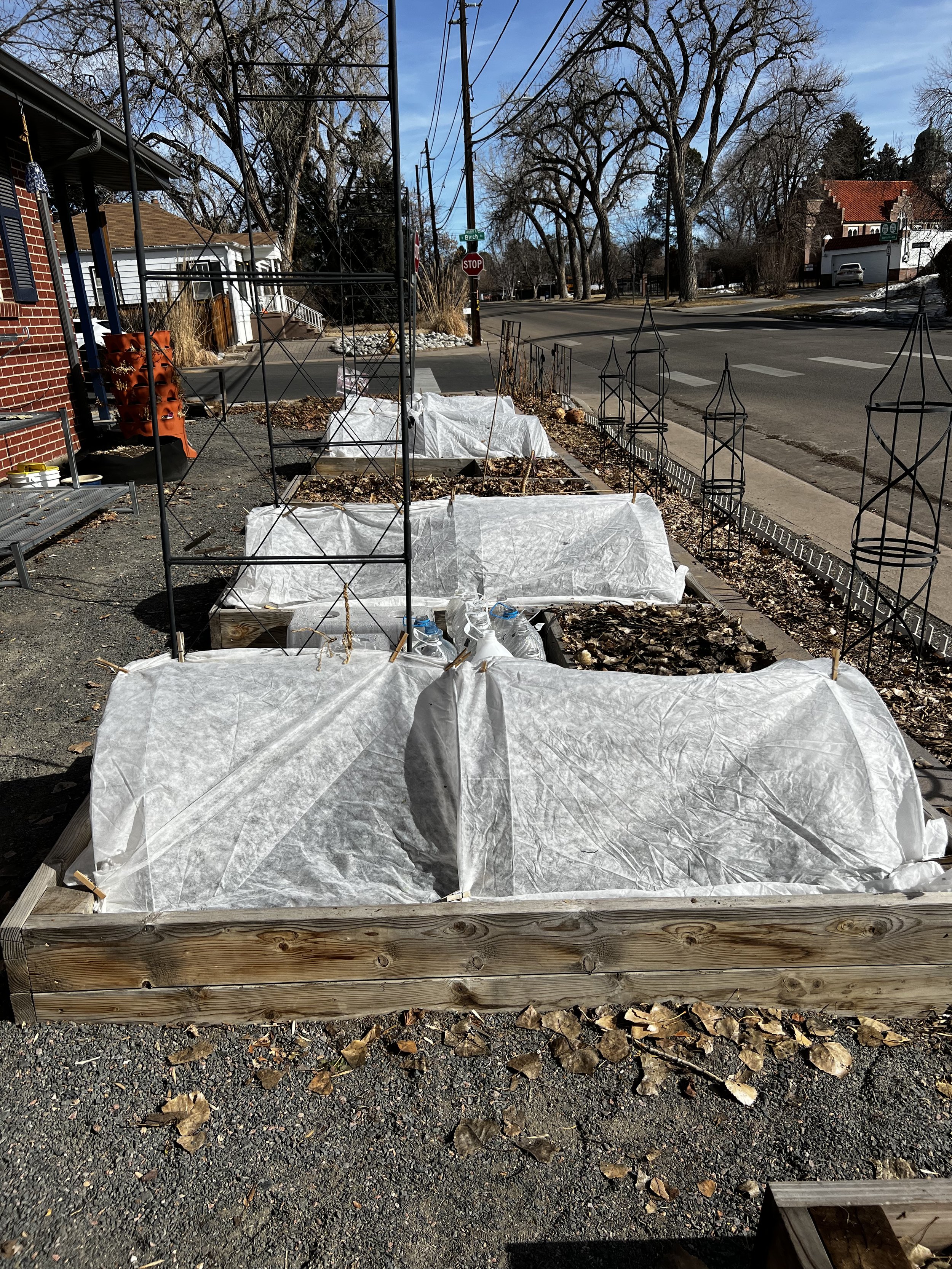How to Protect Your Garden from Denver’s Spring Hailstorms
Springtime in Denver is full of surprises—one day it’s sunny and 70°F, the next a sudden hailstorm pelts your freshly planted seedlings. If you’ve lived here long enough, you know that hail protection is a must for any backyard gardener. But don’t worry—I’ve got you covered (literally)!
Let’s dive into some practical, easy ways to shield your plants from hail so your garden can thrive, no matter what the skies throw at it.
1. Use Row Covers for Quick Protection
Get our Denver Growing Guide now!
Lightweight floating row covers are a gardener’s best friend when it comes to hail, frost, and even pests. These breathable fabrics allow light and moisture in while shielding plants from damage.
🌱 Pro tip:
Keep row covers handy in spring! The key is to drape them over delicate plants before a storm hits and secure them with rocks, bricks, or landscape staples.
2. DIY Hail Shields with PVC or Wire Hoops
For a sturdier setup, create a hoop tunnel using PVC pipes or conduit hoops covered with netting or shade cloth. This structure gives plants breathing room while deflecting hail.
🌱 Bonus: Shade cloth also protects plants from intense summer sun, so it’s a win-win investment!
3. Protect Seedlings with Cloches or Buckets
If hail is in the forecast, individual plant covers can save the day. Try these quick fixes:
Plastic milk jugs with the bottoms cut off
Glass, plastic or wire cloches (great for frost protection too!)
Buckets or flower pots placed upside down (just remember to remove them after the storm)
4. Invest in a Sturdy Hail Netting System
If you’ve had one too many plant casualties, consider hail netting—a durable, long-term solution that lets in light and rain but keeps ice chunks at bay.
Install it over raised beds, trellises, or even entire sections of your garden.
5. Don’t Forget About Drainage
Hailstorms often come with heavy rain, which can flood garden beds. Make sure your soil drains well by:
✅ Adding compost to improve structure
✅ Using raised beds for better drainage
✅ Checking that pots have drainage holes
Final Thoughts: Stay One Step Ahead!
Denver’s weather can be wild, but a little preparation goes a long way. Stock up on row covers, repurpose household items for protection, and consider long-term solutions like hail netting.
🌿 Have a go-to hail protection hack? Share it in the comments!
Give Your Garden the Best Start This Year!
Whether you’re starting from scratch or you’re a garden pro, let us support you in your garden this season. We’ve got something for everyone!
🌱 Want to learn exactly what to grow (and when) in Denver?
Check out our Denver Growing Guide for in-depth advice, planting tips, and planning strategies! Let’s start planning your best garden yet.
🌱 Need help designing a garden that works for YOU?
We offer consultations, custom garden and landscape designs, and maintenance packages. Sign up for a consultation today and let’s create a space that nurtures both your plants and your well-being.
Have questions or want to share your gardening success stories?
Drop a comment below, or reach out through our Contact Page!
Check out our free resources or services!
Save this Blog on Pinterest!
**This post may contain affiliate links, which means I earn a small profit if you click on the link to make a purchase. Other links are not sponsored, because I also like supporting small, local businesses.**
Meet the Gardener
I’m Elisa Mack - a mom and Denverite who went from being a green-ish thumb to a kitchen garden fanatic simply by dedicating myself to the study of all things Colorado gardening.
Landscapers don’t design. And nurseries don’t make house calls.
We take a more full-service approach, from designing your dream garden to keeping it beautiful year-round.
And as your coach, I’ll help eliminate the guesswork through every season, no matter your level of knowledge.












